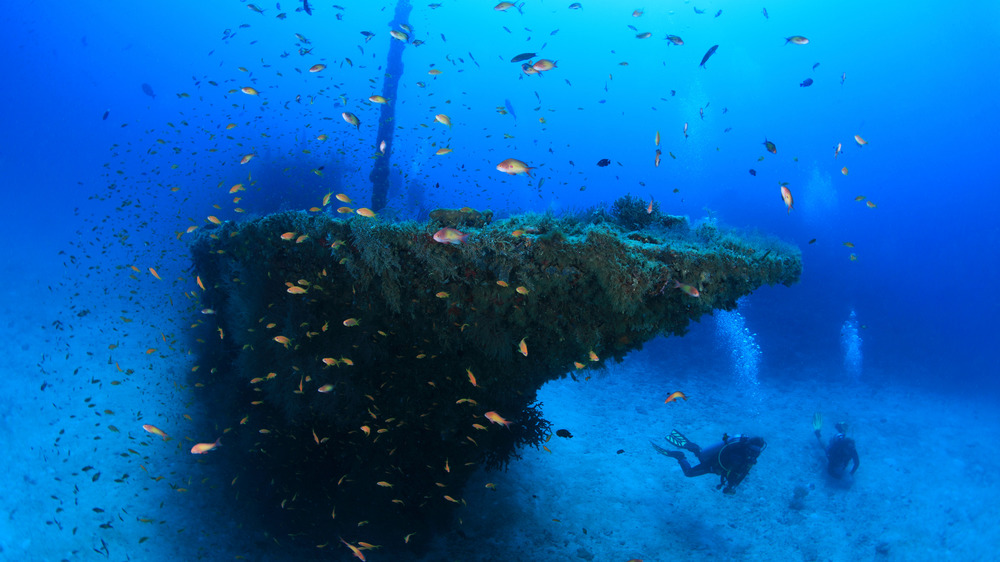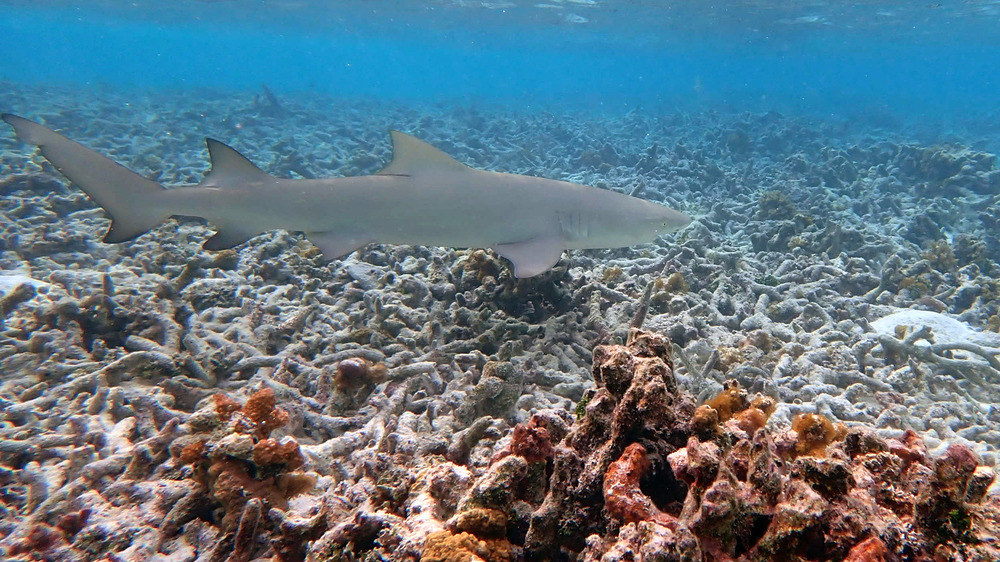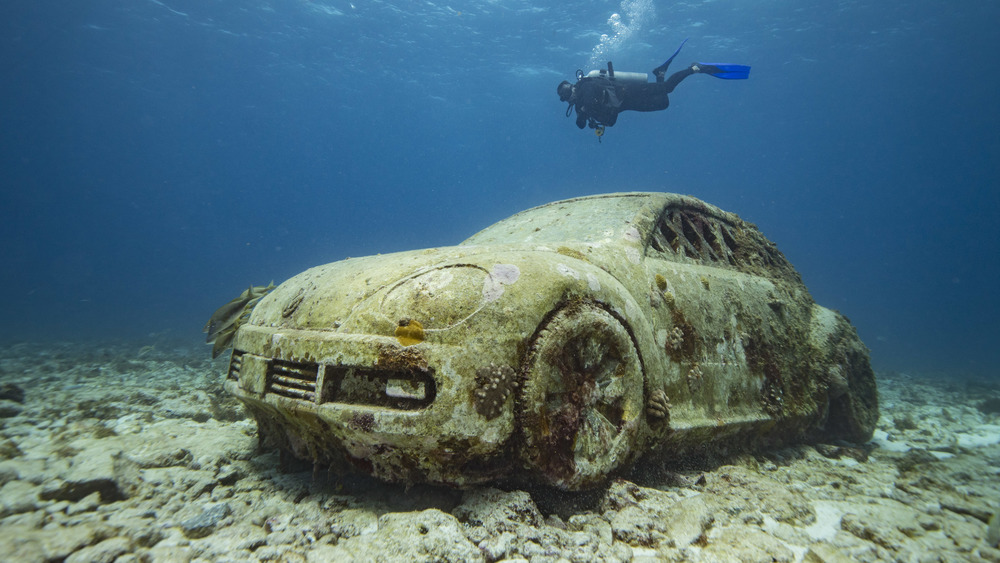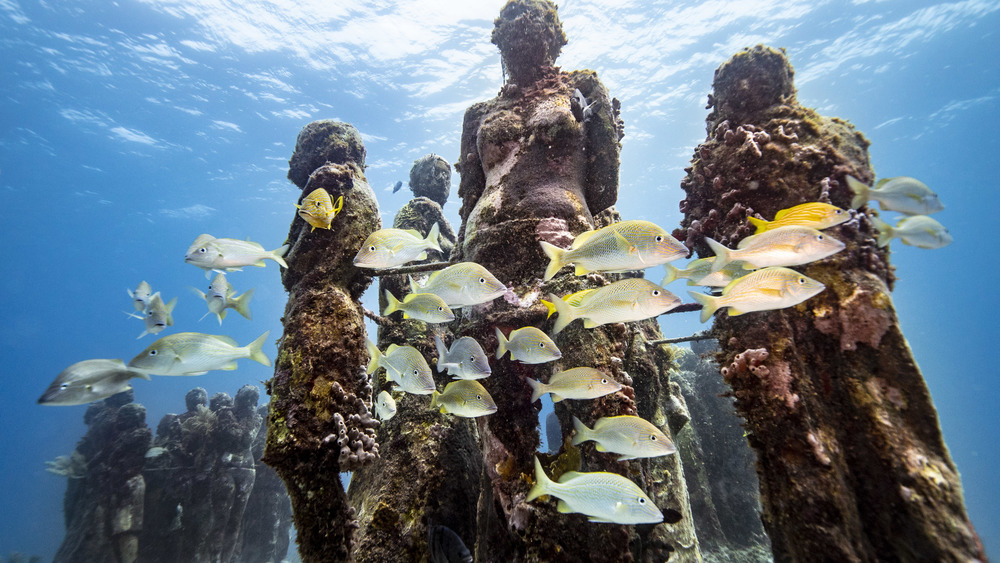The Truth About Artificial Reefs
The oceans are powerful places that affect our daily lives in more ways than we notice when we're simply strolling through the years. They affect the climate and food production, they protect us from rising core temperatures that would destroy all life on the planet, and, of course, they provide a home to some of the coolest as well as most horrific-looking creatures on the planet. But, alas, humanity has been downright awful to the oceans. While the deep blue was providing us with routes to distant lands, we were dumping trash willy-nilly into her depths. When she fed us, we filled her with oil. We got greedy and overfished entire populations to near extinction. All in all, we've taken the oceans for granted, and we're decimating their ecosystem.
We've all seen the depressing pictures of dolphins dying in discarded fishing nets or turtles with drinking straws lodged painfully in their nostrils, or slaughtered whales, but we rarely talk about the aquatic environment. It's not faring much better. From the food species to the wondrous coral reefs, many of them are dying out. But, hey, don't get too doom-and-gloom about it. There's some good news: There are people out there trying to fix it. That's where artificial reefs come in.
Reefs have been degrading for years
The Great Barrier Reef is regarded as one of the most beautiful places in the world. The water shimmers, the colors pop, and the fish do those wonderful fishy things we like them doing, but this reef, like many others, is in grave danger. According to Columbia University, reefs comprise smaller than 1 percent of the total ocean floor and house more than 25 percent of oceanic wildlife, and their livelihood is threatened from just about every angle.
Natural phenomena like hurricanes have always damaged reefs, but in the past, they had the time to recover. Man-made climate change has taken that ability away. As The New York Times points out, powerful oceanic storms have drastically increased as climate change has progressed, leading to 2020 having the most named Atlantic storms in history. These hurricanes are reef executioners, and they're not working alone. Other climate-related factors, like coral bleaching and rising sea temperatures, are among the common components of reef degradation. The most damaging factors though, according to the World Resources Institute, are the ones closer to home. These include sewage dumping, agricultural runoff, overfishing, coastal development problems, and more. According to Secore International, 50 percent of coral reefs have died in the past 30 years, and 90 percent will die in the next 100 if we don't clean up our act.
What are artificial reefs?
For a while now, according to The Atlantic, governments have been sinking ships and tossing large structures like subway cars and tanks into the deep blue for a purpose. Dropping debris to the ocean floor might seem like another form of pollution, but in the case of artificial reefs, it's an effort at conservation. By sinking man-made structures, both intentionally and unintentionally, we have been creating artificial reefs that provide habitats for the rapidly dwindling aquatic wildlife populations that have been on a downhill slide for decades. (Take a look at the National Oceanic and Atmospheric Administration (NOAA) website where you can see the USS Spiegel Grove and the Thunderbolt that are serving this exact purpose off the Florida Keys.)
This doesn't mean you should throw any old thing into the ocean. Items used for artificial reefs need to be cleaned of any toxic residue and can't be made of any materials that break down into toxic compounds; otherwise, they aren't doing the sea floor any favors. A few companies, such as Reef Cells, have begun manufacturing and constructing artificial reefs out of things like limestone, steel, and concrete that are projected to last the long-haul as a way to mitigate pollution while restoring one of the oceans most precious resources. Some of these newer reefs even come with locking plugs that allow small amounts of coral to be inserted into the architecture, where it'll grow and flourish. But do artificial reefs actually work?
The promising effects of these man-made structures
According to the NOAA, artificial reefs pay out in cold, hard metaphorical cash almost as much as they do in proposed ecological benefits. Since sunken treasures, like the graveyard of ships sitting off the southern Atlantic coast of the United States, attract fish and protect them long enough for their populations to rise (in theory), they serve as an attraction for sport fishing enthusiasts. Plus, what aquatic adventurer wouldn't want to SCUBA dive through the wreckage of history?
But do artificial reefs work the way they're intended? Yes, they definitely hold the potential to increase fish populations, but, as JSTOR points out, with the way we're going, we shouldn't hold our breath. According to the publication, artificial reefs have been attracting fish from nearby areas and giving them a home. They've also made them easy pickings for overfishing, which could lead to a decline in fish populations overall. That's bad, but it hasn't come to pass yet, so the potential benefits still exist.
As of now, available data suggests that artificial reefs are keeping the net fish population stable, and that's about it. The question is whether the artificial reefs encourage growth in fish populations — new fish — or simply attract fish already in the general area. It'll take some time to figure out if their populations rise. In the end, there's no home like a natural coral reef to keep the oceans thriving. Perhaps artificial reefs will be the next best thing.



